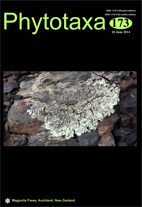Abstract
The parmelioid lichens is a speciose group in the Parmeliaceae family, and the biodiversity of this group is still far from completely understood in many regions of the world. One such region is southernmost South America, viz. the parts of Chile and Argentina south of 49 and 46° S, respectively, and the Falkland Islands. Based on examination of 366 herbarium samples and a study of relevant literature, 51 species of parmelioid lichens are here accepted for southernmost South America, whereas 12 species reported from the area during the last decades have been rejected. Xanthoparmelia austrosorediata and X. tehuelchorum are described as new to science here. In addition, six species are reported as new to southernmost South America, three of which are new to Chile, whereas an additional five species are new to the Chilean region of Magallanes. The apothecia of Flavoparmelia gerlachei and Xanthoparmelia subplittii are described for the first time here. Xanthoparmelia is the largest genus in the area with 21 species, two still undescribed, followed by Hypotrachyna with 11 and Parmelia with five. The lichenologically least explored part of the area is the Patagonian steppe and adjacent areas. Half of the total number of species, including all Xanthoparmelia species, is concentrated to these arid areas, and the majority of these are species which are endemic to South America. Hypotrachyna species are characteristic of the humid evergreen forest zone along the coast, and most of these species have wide pantropical or subcosmopolitan distribution ranges and few records from the present study area. The strongest focus of the present study is the National Park Torres del Paine in Magallanes, and a total of 35 parmelioid species are reported from this area here. Several of these have had their only known localities in southernmost South America destroyed by the 2011/2012 forest fire. Exploration history, frequency, distribution and evolutionary patterns are also discussed for single species or groups of species.

